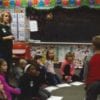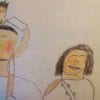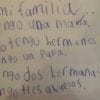En Mi Familia
Developed by Kim Ferraro
Incarnation Catholic School, Dayton
Exploratory Spanish
Grade Level: 2
Introduction
Learning a new language can be hard. Learning from a textbook feels like work, and there is not much interaction with the use of the language and the culture. Music can help! We’ve all had a tune in our brains that is hard to shake. Through the use of song and even gestures, the connection between music, the words, and the language concepts is a bit easier. Thus, Kim Ferraro, language teacher at Incarnation Catholic School in Dayton, Ohio, reinforced this idea during the Muse Machine Summer Institute 2018. With help from drummer Alvin Atkinson, Jr. from Jazz at Lincoln Center Education Initiative, she learned to use music to teach her second graders to learn and love Spanish!
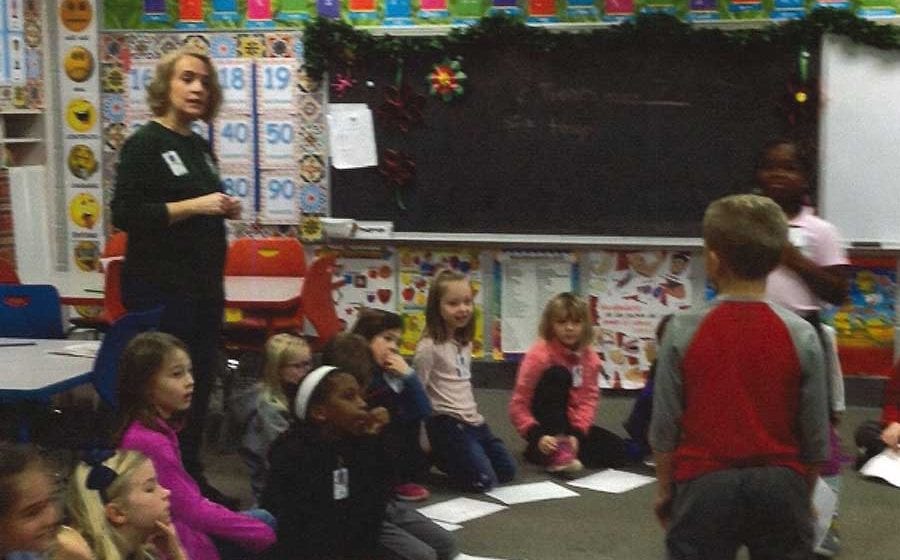

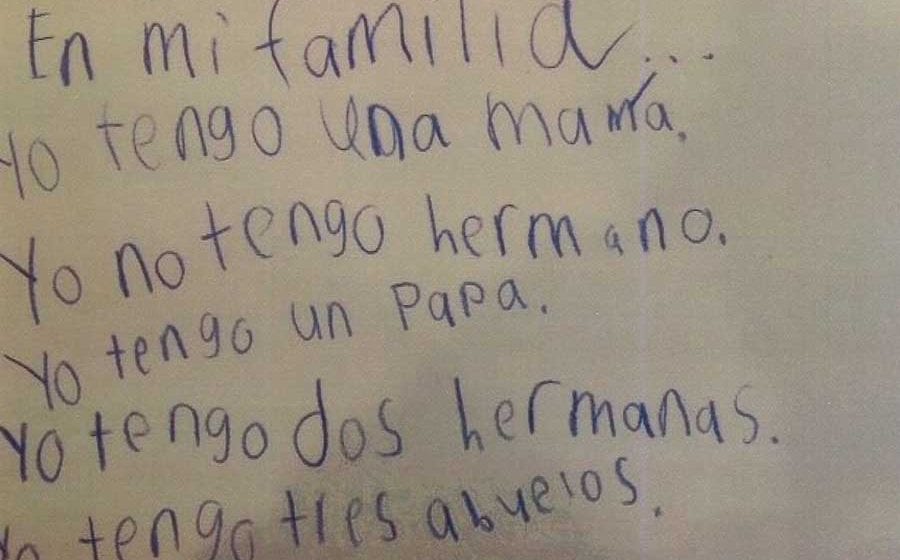
Inspiration
The Muse Machine brought artists from the Jazz at Lincoln Center education program to their Summer Institute 2018 to present the ways that music and rhythm can be woven into the instructional process. Drummer Alvin Atkinson helped a small group of teachers learn to build vocabulary in a world language classroom. It was a very lively activity following a full institute session with Mr. Atkinson using call and response, gestures, and stomp/clap shuffle to remember names.
OVERVIEW
Summary
Students will listen to the song “La Familia”by Rockalingua and learn the lyrics. While learning the lyrics, they will, as a group, create gestures to go along with the lyrics. The movements will be used to aid the students in speaking/singing about their own family. As the year continues, gestures will be used whenever the vocabulary is spoken or read in the Spanish classroom.
Standards (Based on the state of Ohio standards)
Interpersonal Communication:
- Ask and answer simple questions on personal and familiar topics.
- Share simple descriptions of people, places, things and events.
Presentational Communication:
- Describe people, places or things in simple terms to educate or entertain others.
- Dramatize or perform authentic songs, dances, skits or plays containing memorized or highly practiced phrases with appropriate body movements.
Write and perform a simple, original rhyme, story, poem, song, skit or dance.
Objectives/Outcomes
I know the different members of a family in Spanish. I can answer questions about my family in Spanish.
Teaching Approach
- Whole class instruction on the members of my family and short story “La Familia” by the Storyteller’s Corner
- Video presentation of the song “Mi Familia” by Rockalingua using whole class discussion to create TPR movements to accompany the vocabulary of the song
- Direct instruction to present vocabulary of members of the family and explanation about gender differences in relation to language.
- Small group discussion and whole class discussion about members or our families and what makes up a family.
- Collaborative and individual centered student presentations -students will work in small groups to
- Create a picture and paragraph about their family. Together they will support and edit but individually they will introduce their family.
- Collaborative assessment through group game play- students will play Quizlet Live in teams to demonstrate mastery of the family vocabulary and individual assessment through individual responses to whole class questions using Plickers.
Assessment
- Student presentations of their drawings along with their written paragraph about their own family.
- Game Play- Spanish School Bus App on iPads – students will play “la familia” study set. They will show me their mastery at each of the three levels before progressing to the next level using Plickers response cards. Answers will be scanned and data recorded.
LESSON PREPARATION
Teacher Needs
Teacher Information
- Rockalingua.com – “La familia” song and video
- Music & Movement- Using Gestures
(https :// su pe rsi m pl eon Ii ne .com/blog/music-and- movement-using-gestures/)
“La Familia” and “La Familia de Robots” by the Storyteller’s Corner (This is available on teacherspayteachers.com)
Helpful Hints
Have photos of your childhood family on hand to discuss with your students—they love seeing you as a kid. Also, have a photo of your own family—students love to see your children.
Over exaggerate gestures and dancing for the students. It makes them more willing to get themselves moving.
Student Needs
- Prior Knowledge: Students need to feel free to make mistakes, dance and make gestures without being teased
- Student Voice: Students will help to create the gestures to the song that rhythmically correspond to the vocabulary
- Vocabulary: Prior to the lesson students need to understand: tengo (I have), tienen (they have), hay (there is /thereare), son (I have)
EVIDENCE/ASSESSMENT OF OUTCOMES
- Students will answer question about the people in a family appropriately
- Students will draw a photo of their family and write sentences in Spanish about their family
- Students will ask each other about their families
- Students will be able to identify the members of a family successfully in a Plickers “check-in”
ENDURING UNDERSTANDINGS
Students will understand the relationship of language in root words in gender and number. Students will be able to use music and gesture to help remember difficult content.
LEARNING PLAN
Prompt
Teacher show a picture of his/her childhood family (i.e.: mom, dad, brother, sister and myself) and introduce my family to the students. Then, show photo of current family (i.e.: husband, daughters – no son)
Hooks
After showing photo from childhood, describe
family (i.e. older brother, younger sister, baby)
Essential Questions
What defines a family? Who is part of family in any culture?
Resources
” Mi familia” Rockalingua; “La Famila” and “La Familia de Robots” by the StoryTeller’s Corner
Teacher and Student Performance Tasks
Week One
Show photos of your family (childhood and current). Introduce your family to the class. Describe the members (mother, mom, father, dad, older brother, older/younger sister, baby) En mi familia, hay cinco personas: Una mama, un papa, mi hermano mayor, mi hermana mayor y yo – la bebe de la familia. Show photos of current family and introduce them to the class. En mi familia hay cinco personas: Yo, mi esposo, Louie y mis tres hijas, las mas mayor, Carmen, la hija media, Ellie y la hija mas menor, Victoria. As a class, read “La familia” by the Storyteller’s Corner (available on teacherspayteachers.com). Ask the class why – un papa but una mama? Discuss hermano / hermana, el bebe / la beve.
Week Two
Play the song “Mi Familia” from Rockalingua.com. Have the students help to create gestures for the family members in the song. Allow students to create movements but guide them in appropriateness and have the movements of similar members complement each other. For example, brother and sister should be similar but different enough for the students to know the difference. The gesture cannot last longer than the time it takes to sing the Spanish word. Practice the song with the gestures and make changes, if necessary. Have the students stand in a conversation circle and describe my families by using the gestures.
(llengo una hermana en mi familia? Be sure to have the family displayed and use the gesture for “hermana” when asking the question.) Ask students if they have people in their families based on the gestures, too. For example, llienes hermanos en tu familia? If students are having difficulty figuring out the family members, sing the song and use the gestures until you reach the person you are asking about.
Week Three
Sing the song “Mi Familia” from Rockalingua.com use the gestures from the previous week while singing. Have the students draw pictures of their family. Once they have finished the pictures, students will write about the people in their family. Guide them by giving a prompt, “En mi familia, yo tengo … ” Have students write example sentences on the board. Correct any mistakes together. Allow students time to finish/ correct their sentences. Have copies of “La Familia de Robots” printed for students who finish early. They can read the story and answer questions on the worksheet that accompanies the story.Stand in the conversation circle and share sentences about our families. Give everyone a chance to read one of their sentences. As students read their sentences, the listeners must make the gesture of the family member mentioned. For example, Yo tengo un papa y una mama. Yo no tengo hermanos. The gesture for ‘papa’, “mama” and “hermanos” should be made when the students hear it.
Week Four
Sing the song “Mi Familia” from Rockalingua.com use the gestures from the previous two weeks while singing. The song and the gestures will continue to reinforce the vocabulary. Pass back the students family pictures and sentences. Have students sit in the conversation circle. Each student can share a sentence about their family. As the students read a sentence, their classmates will make the gesture for the family member that is discussed. Have students ask each other questions about their families. Hienes un hermano? Hienes una mama? Have copies of the faimilies from “La Familia” and from “La Familia de Robots” by the Storyteller’s Corner printed and have randomly chosen (I use a die) students describe the families. For example, lEn la familia Rodriguez, hay un papa? lCuantos hijos en the familia de robots?
Final Review
Week Five
Sing the song “Mi Familia” from
Rockalingua.com using the gestures from the previous three weeks while singing. Singing will help the students review the vocabulary of ‘la familia’. After reviewing, pass out the Plickers cards (available at Plickers.com). Remind students how to answer using the Plickers cards. Students hold the cards four different directions to choose A, 8, C or D for their answers. Give the students a practice question so they can see how the phone scans their cards to record their answers. Have someone answer the question incorrectly so the students see that they can easily change their answer. Once students are comfortable with their Plickers cards, begin asking questions about the family. For example, Un abuelo es:
A.dad, B. sister, C. grandfather or D. cousin Remind students they cannot talk during the assessment. As the questioning continues, allow students to color La familia de Robots color sheet while they wait for everyone to answer each question.
LESSON REFLECTION
Students will fill out a quick survey on the “La Familia” unit answering questions like: Did you know any vocabulary about la familia before this month? If so, what did you know? What did you learn about la familia? Or vocabulary patterns? What activity helped you to learn the most/easiest? What do you wish we would have done/learned? What will you do to remember your new vocabulary? Students will form discussion circle with inner circle and outer circle and share their answers. Afterwards, we will have a whole class discussion on our reflections. Students will be asked to share discussions from the circle.
